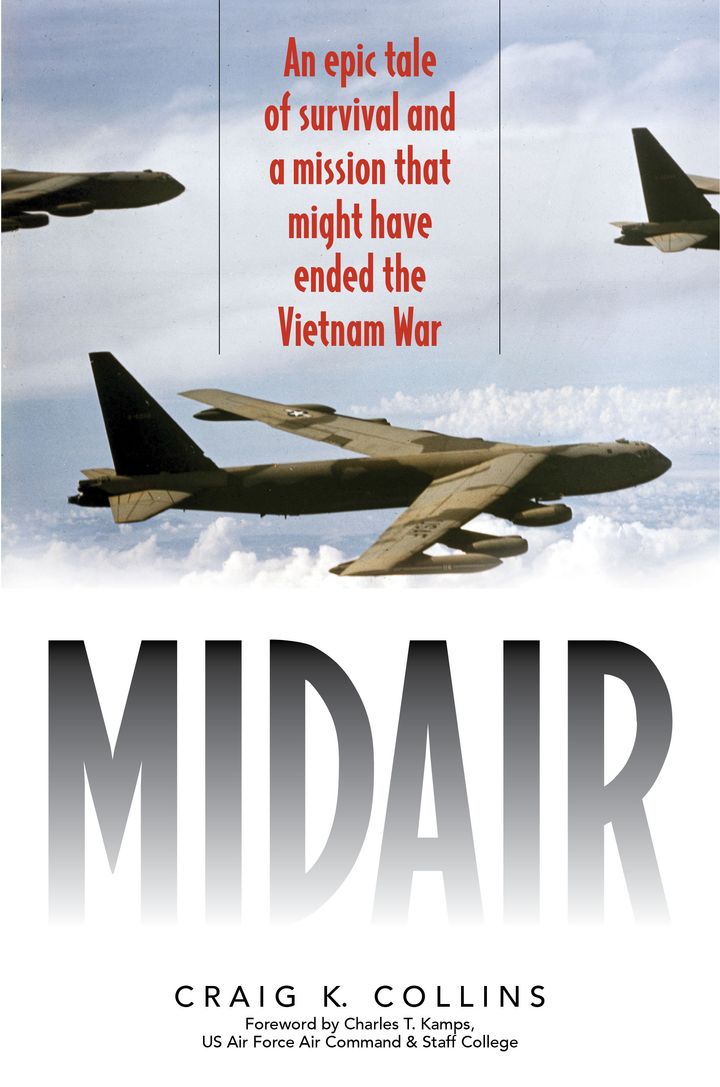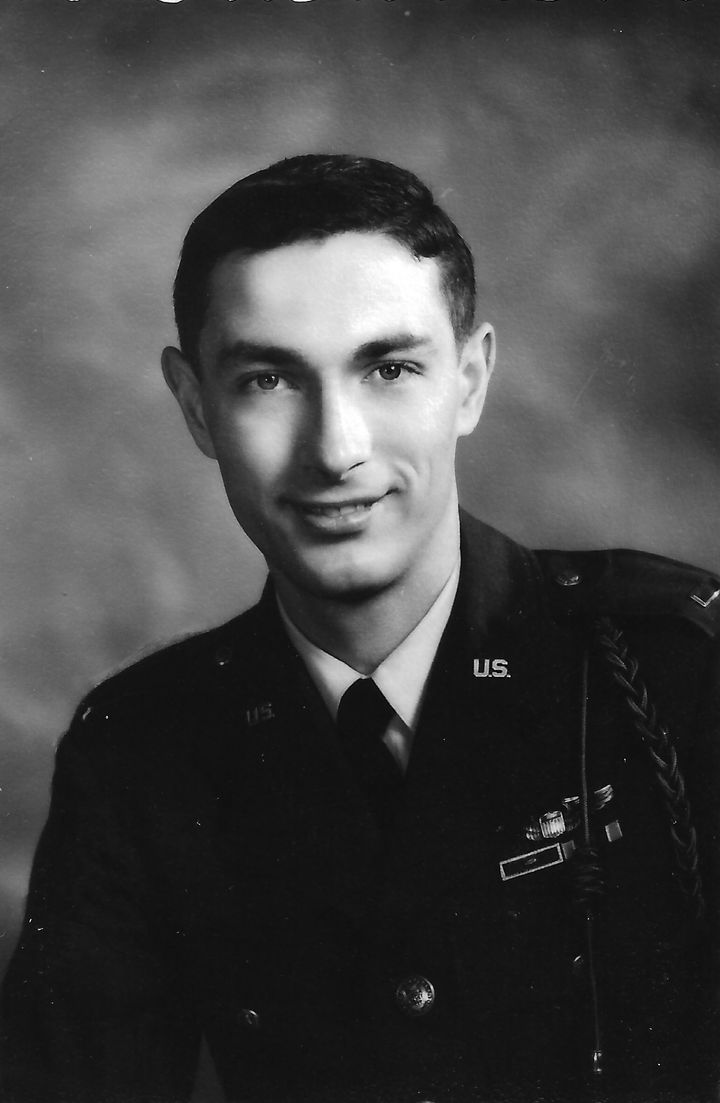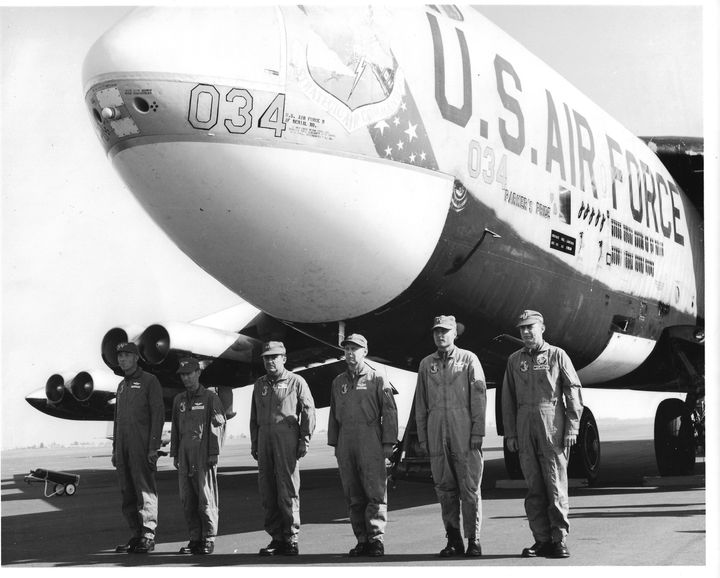
In his compelling Foreward to Midair (Lyons Press, 2016), Charles T. Kamps, a leading authority on the military history and strategy of the Vietnam War, eloquently supports one of the main contentions of the book: Had a top-secret B-52 bombing mission to Hanoi not been canceled at the last hour in February 1965, the Vietnam War might’ve been snuffed out in days or weeks, not years, saving America (and Vietnam) untold blood, treasure and political turmoil.
Maj. Don Harten, then a young, not-yet-battle-tested lieutenant, was a B-52 co-pilot on that scrubbed mission. He is the central figure of Midair, and, as the only living pilot to have flown in Vietnam from the first bomb dropped in 1965 to the last in 1972, possesses a unique, hard-earned perspective of that conflict. Harten has long contended that America’s failure to attack Hanoi with B-52s at the war’s outset ranks as one of the country’s greatest military blunders. Here Kamps explains why Maj. Harten is probably right.
Excerpted from Midair (Lyons Press, 2016) by Craig K. Collins
Foreward by Charles T. Kamps, US Air Force Air Command & Staff College
Don Harten’s name is not common knowledge in America, even within the service to which he dedicated his adult life. This, to be sure, has something to do with the fact that Don’s war – Vietnam – is not one that is normally revered in heroic terms in US military history. But just as surely, his name is what the term “unsung hero” is all about.
Above all, Don was a warrior who could be mistaken for someone who would feel more comfortable in the age of medieval knights except for one thing – flying jets. His driving ambition was to be the very best at his profession. While his comrades in arms received accolades for shooting down enemy MiGs or, less fortunately, for showing great leadership among fellow POWs at the Hanoi Hilton, Don’s goal was to be the absolute best at precisely delivering high explosive ordnance on enemy targets and bringing his flight mates home to talk about it.
With great determination he pursued that goal through multiple combat tours in three different aircraft types that were as different as night and day: the B-52, the F-105 and the F-111. This itself was an achievement that set him apart from his contemporaries. Becoming an expert in these diverse platforms, he not only successfully took them into the jaws of death, but dedicated himself to improving their capabilities and tactics.
The B-52, of course, is the centerpiece aircraft of this story. One can only imagine the horror of two massive jet bombers heading right for each other at high speed over the middle of the South China Sea and, oh yes, at night with typhoon weather. Don’s survival story is harrowing indeed. The near disasters, the near rescues, the sea conditions, and last but not least, the sea creatures, keep you on the edge of your seat with a quiet “I’m glad that wasn’t me” going through your head.
When I was asked to write this foreword, I expected to be treated to standard military biography, but that’s only half the story. Interspersed among the narratives of Don Harten in Vietnam are vignettes of the extended tribe that produced a man like him. These passages are captivating as one identifies family traits that show up in Don. To be sure, there is a good bit of dysfunction here, and a lot of recurring behavior that, in normal individuals, would be considered character flaws, but in a combat pilot are positive attributes. The result is a well-rounded picture.
Although combat pilots have occasionally been maligned with having reputations as hard drinking womanizers who like fast cars, they seldom fit such a one-dimensional mold. In over two decades of working with them at the Air Command & Staff College in Montgomery, AL, I’ve found them, as a whole, to be dedicated professionals with a high degree of analytical skill outside of their own areas of expertise. The Vietnam generation of pilots was no different. Popular history likes to brand the Vietnam-era pilot as someone with a cowboy mentality and a “stabbed-in-the-back-at-home” complex, who shouldn’t be taken seriously when it comes to analyzing the war.
Serious history, however, comes down on the side of the pilots and the generals. In studying the documents and interviews dealing with critical decisions of the war, both sides agree that massive bombing in 1965 would have severely crippled North Vietnam’s ability to wage war. For example, Assistant Secretary of State for East Asian and Pacific affairs William Bundy and Assistant Secretary of Defense John McNaughton, the two architects of President Lyndon Johnson’s eventual “incremental” bombing campaign, admitted in their draft cover memorandum that the Joint Chiefs’ “Option B” for a heavy dose of air power was more likely to produce results than the other options on the table. On the other side of the hill, since it is always good to ask the people who won, Sr. Col. Bùi Tín of the North Vietnamese General Staff remarked in an interview: “If all the bombing had been concentrated at one time, it would have hurt our efforts. But the bombing was expanded in slow stages under Johnson and it didn’t worry us. We had plenty of time to prepare alternative routes and facilities.” Don Harten believed that at the time, and has held that position ever since.
Just what was it that Harten and the Air Force were expecting to do when his wing deployed from Mather AFB, California, to Anderson AFB, Guam, in February 1965? The plan, which was developed but never executed, was as follows:
First Night: Strike by 30 B-52s from Guam against the jet fighter base at Phúc Yên, north of Hanoi, followed the next morning by 68 fighter-bomber sorties striking the Gia Lam air base in Hanoi and the Cat Bi air base in Haiphong, as well as revisiting Phúc Yên.
Phase I (3 weeks duration): Continuous attacks on lines of communications and military installations south of the 20th parallel in North Vietnam.
Phase II (6 weeks duration): Isolation of North Vietnam by destroying rail links to China.
Phase III (2 weeks duration): Isolation of North Vietnam by mining port approaches and destroying port facilities; destruction of supply and ammunition storage in the Hanoi-Haiphong area.
Phase IV (2 weeks duration): Destruction of all remaining targets on the Joint Chiefs of Staff 94-Target List and re-attack of other targets that had not been completely put out of action by initial attacks.
At that time such a program was undoubtedly achievable as North Vietnam had weak air defenses with only 34 fighters, no surface-to-air missiles, and comparatively few anti-aircraft guns. Unfortunately, we waited years to finally launch a serious air offensive that would ultimately bring the enemy to the negotiating table. The shame is that we didn’t do it earlier, avoiding the investment in blood and treasure that followed the “gradualism” policy.
As our famous North Vietnamese opponent, General Vo Nguyen Giap, observed in an interview with PBS in 1983, “There is only one rule in war: one must win.” Don Harten never forgot that, but our policy makers did.



